Like a Russian nesting doll, recently-released photos of a black-painted A-10 Thunderbolt II attack aircraft contain layers of badassery that become all the more impressive the more you learn about them.
The photos show a black-and-grey painted A-10 from the Indiana Air National Guard’s 122nd Fighter Wing, based in Fort Wayne, Indiana. The paint scheme is named “Blacksnake,” which is the moniker for members of the 122nd and a nickname for Fort Wayne’s namesake, Army Maj. Gen. Anthony “Mad Anthony” Wayne.
Who is Mad Anthony? A Revolutionary War hero, Wayne led his troops against impossible odds on battlefields up and down the East Coast. He was famous for his methodical fighting style, where he had his troops wait for the exact right moment to strike, according to a press release about the paint job. The tactic was similar to that of the North American Black Snake, which led Native Americans to give Wayne the nickname “Black Snake.”
“The Blacksnakes are proud of the name’s historical significance and connection it gives us to our local community and hometown of Fort Wayne,” said Air Force Master Sgt. William Hopper, a spokesman for the 122nd.
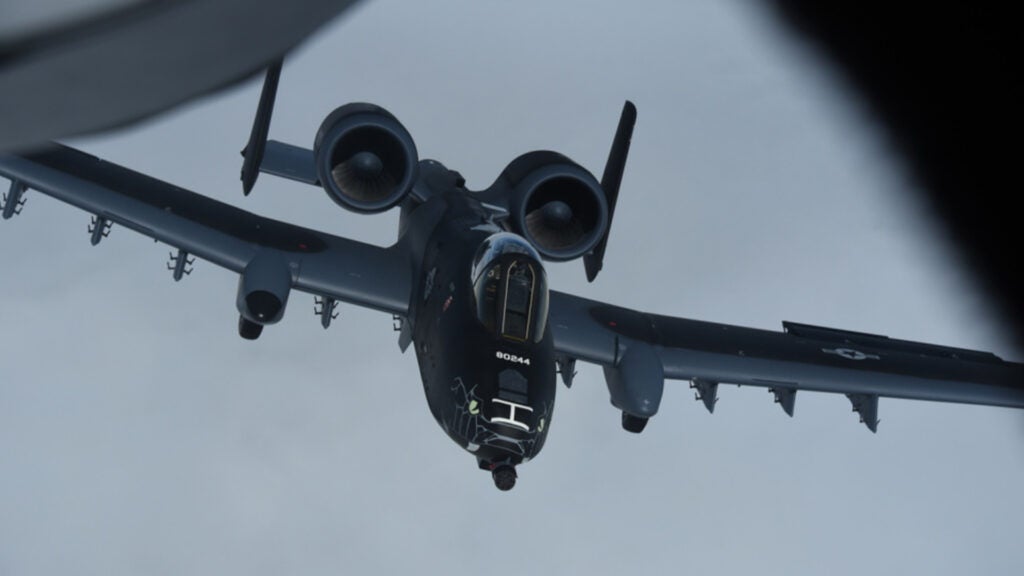
The name is also fitting for the A-10, a legendary aircraft that is famous for doling out overwhelming firepower right when ground troops need it most. Maj. Gen. Wayne probably could have used some of that himself on July 16, 1779, when he and 1,350 troops under his command snuck up on British positions at Stony Point, about 30 miles north of New York City. Under cover of darkness, Wayne had his troops climb the rugged slopes of the north and south sides of the Point while another battalion launched a diversionary attack on the eastern side. With the British troops distracted, he and his men sprang into the stronghold and captured it in 20 minutes, according to the National Park Service.
While the Battle of Stony Point was Wayne’s most famous achievement, and one for which Congress gave him a medal, he also fought at Philadelphia, Monmouth, Yorktown, and Georgia, where he and his infantry often battled overwhelming odds. He got his nickname “Mad” from “possessing a foolhardiness in battle that went beyond prudence,” according to one biography, an impression he enhanced by using “florid, impetuous language.”
“A bloody track will mark my setting sun,” he said, should he be killed in battle, according to the biography, “Anthony Wayne, Soldier of the Early Republic,” by Paul David Nelson.
A bloody track Wayne certainly left across the midwest, where after the Revolution the general led 1,000 soldiers over the Northwest Indian Confederation, ending Native American resistance in the region. Over 200 years later, members of the Miami tribe protested the Fort Wayne City Council’s resolution to declare a “Mad Anthony Day” because of his role removing Native Americans from their land and contributing to their “genocide,” as one city council member said.
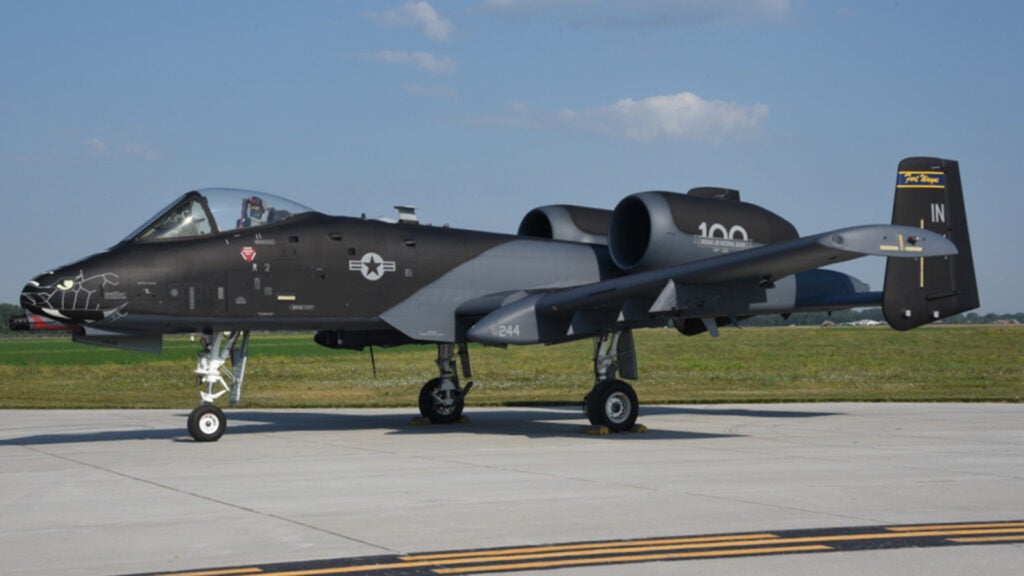
For good or bad, Wayne’s “Blacksnake” legacy looks good on the 122nd’s A-10, which also sports fangs and snake eyes around its 30mm rotary cannon. The paint job also features a large number “100” and the years “1921-2021” which celebrate the 100 years of military aviation that have passed in the Indiana Air National Guard since it first launched the 137th Observation Squadron in 1921.
We can’t wait to see what paint job the 122nd comes up with for the 2121 anniversary. Until then, this Batwing look is positively BRRRT-iful.
-
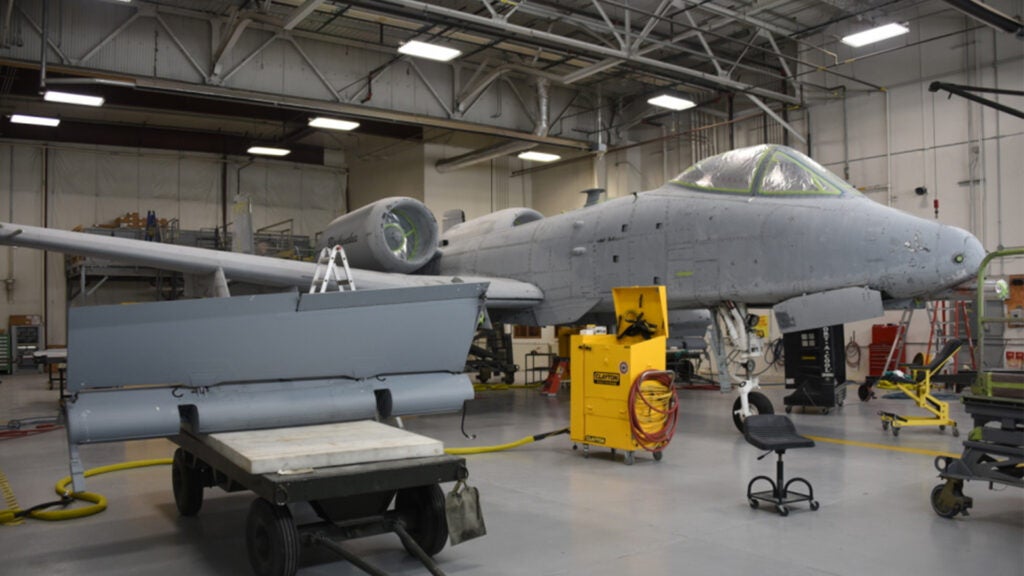
A freshly sanded U.S. Air Force A-10 Thunderbolt II from the Indiana Air National Guard’s 122nd Fighter Wing is ready for a primer coat of paint at the Air National Guard paint facility in Sioux City, Iowa on June 9, 2021. (U.S. Air National Guard photo: Senior Master Sgt. Vincent De Groot) -
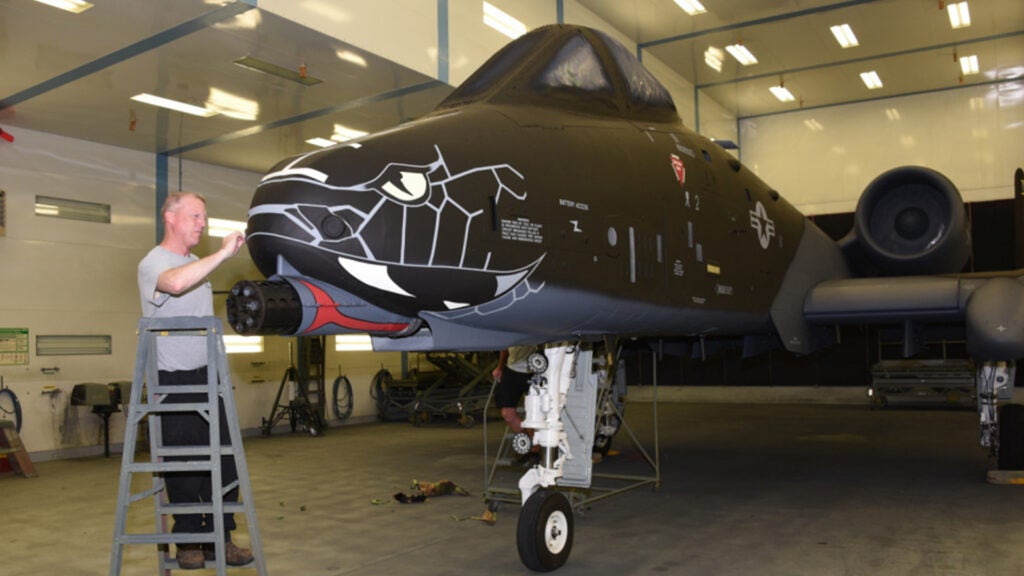
Air National Guard Paint Facility technician, Paul Grigsby cleans up stenciling on the nose of a U.S. Air Force A-10 Thunderbolt II while in the paint booth at the Sioux City, Iowa based Air National Guard Paint Facility on June 29, 2021. (U.S. Air National Guard photo: Senior Master Sgt. Vincent De Groot) -
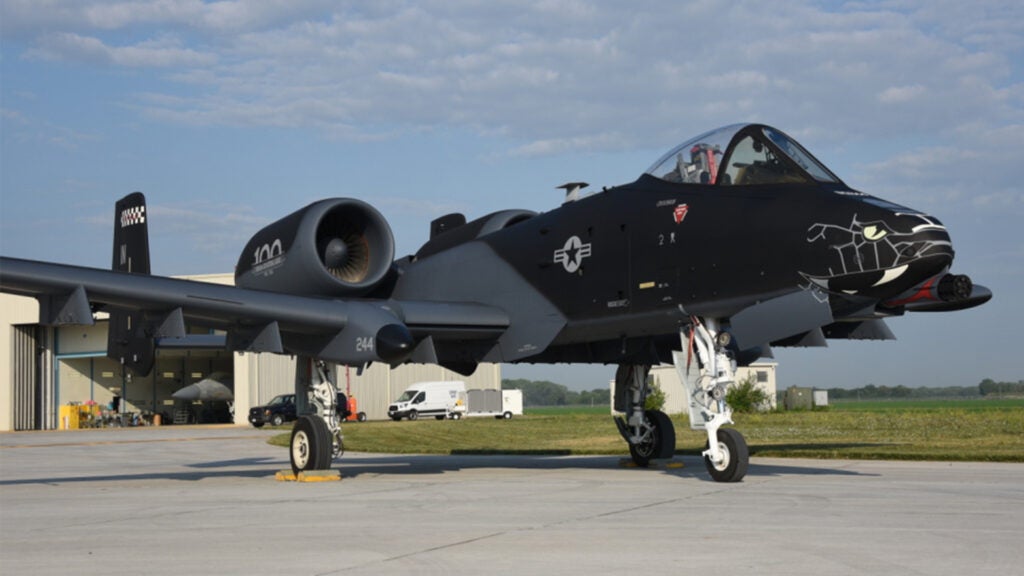
A black and grey U.S. Air Force A-10 Thunderbolt II from the Indiana Air National Guard’s 122nd Fighter Wing “Blacksnakes,” painted at the Air National Guard paint facility in Sioux City, Iowa on July 2, 2021. (U.S. Air National Guard photo: Senior Master Sgt. Vincent De Groot) -
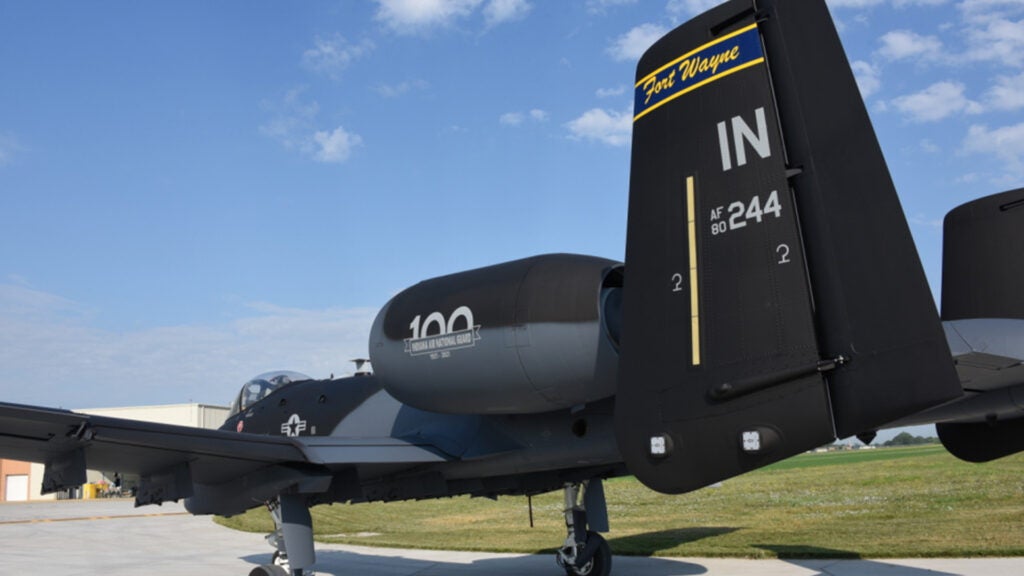
A black and grey U.S. Air Force A-10 Thunderbolt II from the Indiana Air National Guard’s 122nd Fighter Wing “Blacksnakes,” painted at the Air National Guard paint facility in Sioux City, Iowa on July 2, 2021. (U.S. Air National Guard photo: Senior Master Sgt. Vincent De Groot) -
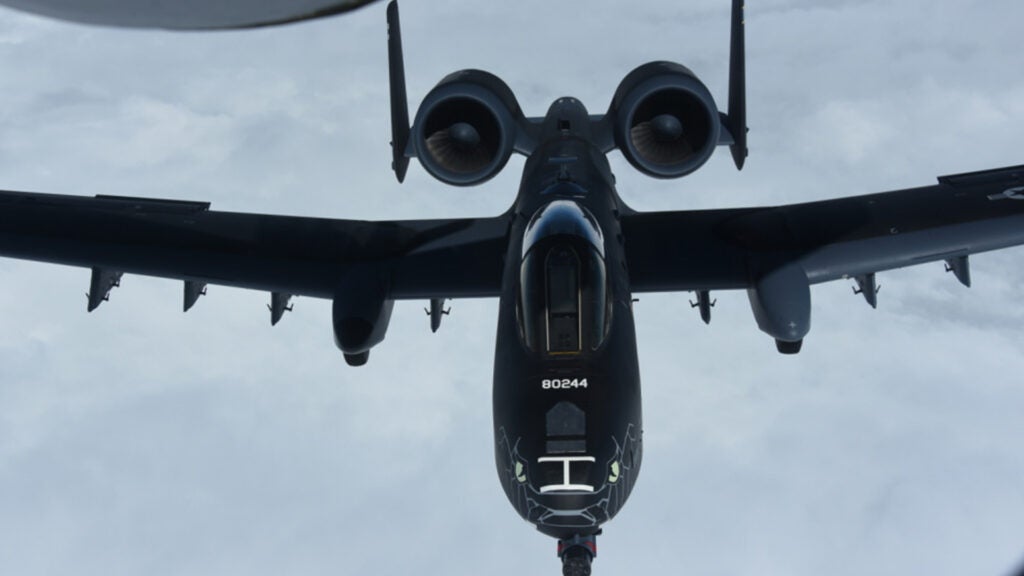
A black and grey U.S. Air Force A-10 Thunderbolt II from the Indiana Air National Guard’s 122nd Fighter Wing “Blacksnakes,” flying home on July 7, 2021. (U.S. Air National Guard photo: Senior Master Sgt. Vincent De Groot)
More great stories on Task & Purpose

